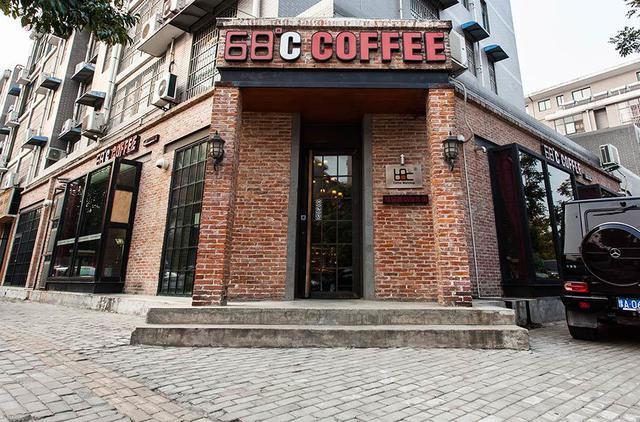There are so many things that physical bookstores can do to make money, inspired by bookstores and cafes.
Today, when brick-and-mortar bookstores are in the doldrums, Waterstones, a chain of bookstores founded in 1982, is in full swing in all parts of the UK and is profitable this year.
But five years ago, like many other bookstores, it was not easy at all.
Before 2010, Waterstones had 170 million pounds in debt; in 2011, it was sold to Russian millionaire Alexander Mamut;2012 for 53 million pounds by parent company HMV, resulting in a loss of 37 million pounds; in 2013, it lost 23 million pounds. In 2015, it returned to profitability.
There are many factors that have helped Waterstones reverse its performance: perhaps e-books have become increasingly difficult to sell in recent years, and consumers miss the smell of paper books again. But this reason alone does not explain why it is the only one that has been successful again, while many other bookstores are still in jeopardy.

Picture from Graeme Robertson / the Guardian
Among the many elements that have turned Waterstones around, its current CEO James Daunt is a must.
After Mamut, a Russian, bought the bookstore chain in 2011, the first thing he did was to find Daunt and ask him to take over Waterstones. At the time, Waterstones had 280 stores in the UK and some European countries, while Daunt owned an independent bookstore in London.
Since taking office, Daunt has done two things.
First, he rescheduled the company's human resources. After laying off half of the company's management and 1/3 of the store staff, he gave full authority to the new store managers, allowing them to decorate windows and arrange book display spaces according to local preferences. At the same time, he asked store managers everywhere to clean up the store's inventory according to the reading needs of the locals, especially those focused on dictionaries, technical guides and law textbooks. After the cleanup of personnel and inventory, the proportion of unsold books returned by Waterstones to publishers fell from 23 per cent to 4 per cent today.

The picture is from the official website of Waterstones
Second, he also changed the standard of book stacking heads in the store. Before that, Waterstones, like many other bookstores, listened entirely to publishers who were willing to pay the highest price to promote their books when choosing which books to put in the best place in the store. This modus operandi has earned Waterstones 30 million pounds.
But Daunt questioned such an "industry approach". He withdrew the right to stack books from publishers and left them to bookstore managers to encourage them to make differentiated arrangements according to regional needs. For example, the bookstore opened in the working class, the bibliography located in the most prominent position in the store will be different from the rich area. By the same logic, there will be frequent discounts in some places and no discounts in others.
In addition, Daunt has also made adjustments to Waterstones's in-store details. He spent a lot of money decorating the facade, adding new large tables in the store, optimizing the lighting on the bookshelves, and opening up the wireless network, creating a more spacious, bright and comfortable environment for buying books. Since 2012, Waterstones has also introduced its own-brand cafe Cafe W in its stores.

The picture is from bookdao.com

The picture is from the official website of Waterstones

Self-branded cafe in the bookstore, picture from stv.tv
When Kindle appeared, critics predicted the imminent demise of print books and brick-and-mortar bookstores. But the example of Waterstones tells us that people still like to go to bookstores. As for how to make bookstore shopping a habit and the possibility of paying for physical books, the means and intentions it relies on may be far more complicated than increasing the variety of books and adding sales areas such as toys, stationery and games.
Source: curiosity Daily
Important Notice :
前街咖啡 FrontStreet Coffee has moved to new addredd:
FrontStreet Coffee Address: 315,Donghua East Road,GuangZhou
Tel:020 38364473
- Prev

The world's first travel cafe, Beijing Blue Harbor, opening reading is a journey of the soul.
[abstract] on December 16, the first travel cafe in the mainland of World Bond Travel Network opened in Blue Harbor, Beijing. Reading is the travel of the soul, and travel is the reading of the world. Zhang Pinghe, CEO of World Bond Travel Network, said that the World Bond has always adhered to the concept of serving the spirit of free travel, with the smell of books as the introduction, coffee as the companion, reading to the world around free travel, and building a line for travelers.
- Next

When I meet you at the best time, the unique taste of coffee can fill my mouth with mellow smell.
68 ℃ is the best drinking temperature for coffee. Tasting the coffee carefully made by 68 ℃ Cafe, when the coffee meets the lips and tongue, the unique taste of the coffee can fill the mouth and exude its mellow flavor. Xu Jia / photo taken in the center of the noisy city, feeling the quiet afternoon. The ubiquity of the city makes it impossible for people to slow down to feel the beauty of life, or
Related
- What brand of black coffee is the most authentic and delicious? what are the characteristics of the flavor of the authentic Rose Summer Black Coffee?
- Introduction to the principle and characteristics of the correct use of mocha pot A detailed course of mocha pot brewing coffee is described in five steps.
- Which is better, decaf or regular coffee? how is decaf made?
- How much is a bag of four cat coffee?
- How about four Cat Coffee or Nestle Coffee? why is it a cheap scam?
- Which is better, Yunnan four Cats Coffee or Nestle Coffee? How about cat coffee? is it a fake scam? why is it so cheap?
- How about Cat Coffee? what grade is a hoax? which instant coffee tastes better, four Cat Coffee, Nestle Coffee or G7 coffee?
- Process flow chart of coffee making-Starbucks coffee making process what coffee tastes good at Starbucks
- The top ten best coffee beans in the world Rose summer coffee or Tanzanian coffee tastes good
- Yunnan four cat coffee is good to drink?_four cat coffee is a big brand? four cat blue mountain coffee is fake?

